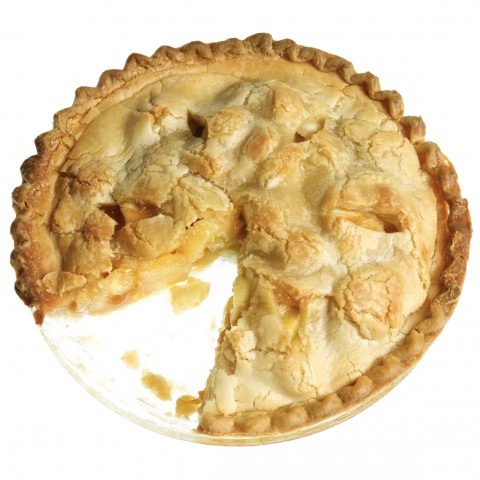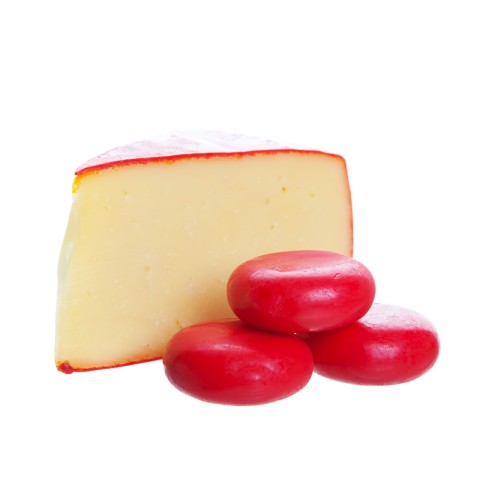
What better way to explore a culture than through its foods? You can’t say you know a country—or a language—if you don’t know something about the foods associated with it. So if you really want to get to know the Dutch, you must become familiar with Dutch food as well.
Dutch food and cuisine may not be the most famous and it may not be the most delicious either, but it does have its charm. It’s flavorful, it’s great for those chilly winter days, and it reflects how the Dutch love to enjoy life with a nice hot plate of soothing food, a savory snack, or something sweet. There’s something out there for every taste preference.
Ready to dive into the unfamiliar world of traditional Dutch food with us?
In this guide, you’ll learn everything you need to know about Dutch delicacies: from Dutch foods you must try in a restaurant to one of the best Dutch food recipes to make at home.
Eet smakelijk! (“Enjoy your meal!”)
 Table of Contents
Table of Contents
- Must-Try Dishes in Dutch Restaurants
- Unique Dutch Products
- Food Vocabulary
- Bonus: A Simple Dutch Recipe For Those Delicious Stroopwafels
- How DutchPod101 Can Help You Learn More Dutch
1. Must-Try Dishes in Dutch Restaurants
While you’re in the Netherlands, it may be hard to find traditional Dutch food in most restaurants. As typical Dutch food isn’t very classy, the Dutch often prefer going to restaurants with cuisines from other countries. However, the old Dutch food is making a comeback, and you can find it more often (sometimes with a little twist) in the more hip-and-happening restaurants and bars.
Below are some Dutch food specialties you should absolutely try if you stumble upon them on the menu!
A- Appetizer
Bitterballen

Do you know what bitterballen are? They’re deep-fried crispy meatballs!
It’s a delicious Dutch pre-dinner snack that’s very popular and found on the menu in many bars and restaurants. The Dutch love to eat it when they’re having some drinks or waiting for their meal. These delicious, deep-fried crispy meatballs are traditionally served with mustard. It’s truly the ultimate Dutch pub snack!
B- Main Course
Snert

Snert (“pea soup”) is a true traditional Dutch food. It’s a thick, hearty green stew of split peas, vegetables, and meat.
The soup is mostly served a day after its preparation because that gives it time to thicken. While snert may not be the most attractive name for a dish, it’s actually a delicious soup that’s a meal in itself. This is a typical Dutch food item during the cold winter, especially popular after ice skating. It may be hard to find in Dutch restaurants, but you can still find it in some of the older places. Another name for snert is erwtensoep.
AVG

AVG is short for Aardappel, Vlees, en Groente (“Potato, Meat, and Vegetables”). This might be the most classic thing to eat in the Netherlands as it’s the base of every traditional Dutch meal. It’s served in a lot of Dutch households, with the kind of meat or vegetables used differing from day to day.
A lot of the traditional Dutch foods have been influenced by farmers, so the meals are quite simple yet tasty and filling—everything you need after a day of hard work in the outside air. Take the next dish, for example.
Stamppot

Stamppot literally means “mash pot” and it’s a mix of potato mash and vegetables that may or may not be leftovers. There are special combinations to accommodate different preferences. The vegetables typically used in this mix are kale, endive, cabbage, carrot, or sauerkraut. It’s often served with meat on the side (or sometimes mixed through) and gravy. This is the ultimate comfort food, and one of the most popular Dutch winter recipes.
Hachee

Hachee is a tasty Dutch stew with meat, fish, or poultry and vegetables in a thick gravy sauce with laurel leaves and cloves. It takes quite some time to make hachee, as it simmers for a long time—but this long process also results in a very tender meat. It’s an old Dutch food that was originally a peasant dish, invented to use up leftovers.
As you might have noticed, its name sounds French. It comes from the French verb hacher which means “to chop,” referring to the preparation of the vegetables and meat.
Pannenkoeken

Pannenkoeken, or Dutch “pancakes,” are different from any other type of pancake. They’re thinner and more crepe-like than the thick American pancakes but thicker than the French ones.
What’s even better is that you can eat them with a wide range of toppings: syrup, powdered sugar (called poedersuiker in Dutch), apple, bacon, cheese, and a lot of other savory or sweet toppings. You can even find special all-you-can-eat pancake restaurants in the Netherlands. The Dutch typically eat pancakes for dinner, so it’s not a breakfast food like it is in some other countries.
But that’s not all! There’s another special variation of this traditional Dutch recipe: small pancakes called poffertjes. These are little fluffy round pancakes, often served with butter and powdered sugar. You may find them in pancake restaurants or street markets.
C- Dessert
Appeltaart

Appeltaart means “apple pie,” and the true Dutch “grandmother’s apple pie” (oma’s appeltaart) is a classic dessert and makes for the perfect sweet snack during the day. This apple pie has a delicious cinnamon taste and its apple filling is mixed with raisins and sometimes even walnuts. And if that’s not enough, it’s often served with whipped cream and/or vanilla ice cream. If you want to try a truly Dutch dessert, this is the way to go.
Vlaai

Vlaai is a sweet pie that originated from the province of Limburg, making it a real classic from the southern Netherlands. Its classic version has a yeast pie base, a filling of creamy custard, and a crumbly topping. However, nowadays, there are several different vlaai fillings: chocolate, rice pudding, apples, bananas, strawberries, and the list goes on. If you want to try a traditional Dutch vlaai, you have to try it in Limburg, the proud province of this special pie.
2. Unique Dutch Products
Now that you’ve learned about the must-try Dutch dishes, it’s time to dive into some lesser-known (but equally delicious!) foods in the Netherlands. The Dutch love to snack on sweet and savory foods alike, so let’s see what their favorites are!
A- Sweet Foods
Stroopwafels

The stroopwafel (“syrup waffle”) is definitely the most famous Dutch cookie, and it’s famous for a reason! If you were in the Netherlands and could only eat one Dutch sweet treat, then it should definitely be a stroopwafel.
This cookie consists of two thin waffles stuck together with a layer of sweet syrup. If you can find a newly baked, hot stroopwafel at a street market or bakery, then go for it. If not, the supermarkets also sell them in packages and those are quite delicious as well.
- → Would you like to learn some supermarket vocabulary? Then have a look at this list of Essential Dutch Supermarket Words and Phrases.
Hagelslag

Hagelslag are sprinkles, which the Dutch mainly use to sprinkle on their bread (although you can also use it on many other types of food). Chocolade hagelslag (“chocolate sprinkles”) are the most popular, but there are also other flavors.
Imagine this: a nice fresh slice of bread with some butter (to keep the sprinkles on) and delicious hagelslag. Yes, the Dutchies know what they’re doing and how to enjoy their bread. They mostly eat this for breakfast or lunch.
Drop

Drop (“liquorice”) is an old Dutch food—and it may not be the liquorice you know and love. It can either be very sweet or very salty, making it versatile as a sweet or savory food. You might have to get used to the Dutch version of liquorice due to its strong flavors. The Dutch love their drop and will probably offer some to you in informal settings. Definitely try it, but be aware and approach it with caution.
Oliebollen

Oliebollen literally translates to “oil balls.” Although it may not sound very delicious, this New Year’s Eve classic is a classic for a reason.
They are deep-fried balls of dough dusted in powdered sugar; they taste quite like a donut. There are different varieties of the oliebol, and they can come with or without raisins inside. People make it in their homes on New Year’s Eve, but you can also buy them at food stands on the streets in December.
B- Savory Foods
Patat

Patat are thick Dutch fries, but they’re like no fries you’ve eaten before. You can’t leave the Netherlands until you’ve tried some! They come in a cone and can be eaten with great combinations of sauces.
The Dutch make the craziest combinations. For example:
- patat speciaal (“special fries”) – fries with a mix of (curry)ketchup, mayonnaise, and onions
- patatje oorlog (literally “little war fries”) – a mix of peanut sauce, mayonnaise, and onions
Haring

The rauwe haring (“raw herring”) is not everybody’s favorite, but this raw fish is a true Dutch classic! You should definitely give it a go.
You can spot the haringkarren (“herring carts”) on a lot of busy streets. They serve haring met ui (“herring with onion”) or on bread with pickles and onions (broodje haring). The best time to eat haring in the Netherlands is between May and July, because the haring is sweetest during this time.
Gouda kaas

Our unique Dutch food list wouldn’t be complete without the famous Dutch Goudse kaas (“Gouda cheese”). The Dutch are quite serious about their cheese and you’ll quickly notice this when visiting a Dutch cheese market, shop, or even a supermarket.
There are a lot of tasty Dutch cheeses to try, but Gouda is the true classic. The Dutch mostly eat it on their bread, boterham met kaas (“slice of bread with cheese”), but they also enjoy it as a snack, blokjes kaas (literally “little cubes of cheese”). Needless to say, this goes perfectly with a nice cold beer.
- → Practice your pronunciation and discover more Dutch foods with this useful Dutch Food vocabulary list.
3. Food Vocabulary
Now that you’re good and hungry, let’s go over some practical words and phrases you’ll need to talk about, order, and prepare food!
A- Talking About Food
- Ik heb honger. (“I’m hungry.”)
- Ik ben vol. (“I’m full.”)
- Ik sterf van de honger! (“I’m starving!”)
- Ik houd van kaas. (“I love cheese.”)
- Ik vind kaas lekker. (“I like cheese.” / Literally: “I find cheese tasty.”)
- Ik houd niet van kaas. (“I don’t like cheese.”) – The word used here means “love,” but in a casual way.
- Ik vind kaas niet lekker. (“I don’t like cheese.”)
- Ik eet geen vlees. (“I don’t eat meat.”)
- Ik ben vegetariër/veganist. (“I am a vegetarian/vegan.”)
- Ik ben allergisch voor noten. (“I’m allergic to nuts.”)
- Mijn favoriete gerecht is stamppot. (“My favorite dish is stamppot.”)
B- Cooking
Ingredients
- Zout (“Salt”)
- Peper (“Pepper”)
- Suiker (“Sugar”)
- Water (“Water”)
- Melk (“Milk”)
- Olijfolie (“Olive oil”)
- Eieren (“Eggs”)
- Bloem (“Flour”)
- Fruit (“Fruit”)
- Groenten (“Vegetables”)
- Vlees (“Meat”)
- → When reading recipes, you’ll be glad to know the basic vocabulary for Fruits and Vegetables and Herbs and Spices!
Utensils
- Een pan (“A saucepan”)
- Een koekenpan (“A frying pan”)
- Een oven (“An oven”)
- Een mes (“A knife”)
- Een snijplank (“A cutting board”)
- → You can find much more vocabulary on Utensils and Tableware in our free vocabulary list on DutchPod101.com. You can also have a look at our list of Essential Vocabulary for the Kitchen.
Cooking Verbs
- Koken (“To cook”)
- Stoven (“To stew”)
- Bakken (“To bake”)
- Braden (“To roast”)
- Frituren (“To fry”)
- Snijden (“To cut” / “To slice”)
- Schillen (“To peel”)
- Raspen (“To grate”)
- → You can find more Essential Vocabulary About Cooking on DutchPod101.com and improve your pronunciation with the useful audio recordings.
C- Ordering Food
- Het menu. (“The menu.”)
- Een tafel voor twee. (“A table for two.”)
- Een glas water, alsjeblieft. (“A glass of water, please.”)
- Een voorgerecht (“A starter”)
- Een hoofdgerecht (“A main course”)
- Een dessert (“A dessert”)
A dessert can also be called nagerecht, literally meaning “after dish.” This makes sense, seeing as voorgerecht literally means “before dish.”
- De rekening. (“The bill.”)
- De fooi. (“The tip.”)
- → For more useful phrases for ordering food in Dutch restaurants, have a look at our list of the Most Useful Phrases and Vocabulary for Ordering Food and this Restaurant vocabulary list.
4. Bonus: A Simple Dutch Recipe For Those Delicious Stroopwafels
Have you tried stroopwafels already and gotten hooked? Or would you love to try them someday but won’t be traveling to the Netherlands anytime soon? Either way, treat yourself at home with one of the best Dutch food recipes you could imagine!
Hold your horses, you do need a waffle cone machine or waffle iron for this recipe. Do you have one at home? Lucky you. Now you can try this delicious Dutch recipe at home.
Preparation time: 40-65 minutes
Baking time: 10-20 minutes
Ingredients
For the waffles:
- 500 grams of flour
- 250 grams of melted butter
- 150 grams of white caster sugar
- 50 grams of yeast
- a little bit of lukewarm milk
- an egg
For the filling:
- 500 grams of syrup
- 300 grams of dark brown sugar
- 75 grams of butter
- a teaspoon of cinnamon powder
Preparation
There are two secrets to preparing the best stroopwafel:
- ★ You can only process the waffles warm, otherwise they break.
★ The butter and sugar have to be worked through the syrup, making it even stiffer and stickier.
The preparation also consists of two parts: baking the waffles and making the filling.
Make a batter with the waffle ingredients; it will be a fairly firm mass that you’ll have to knead together. Let the dough rise for 45 minutes, preferably in a moist-warm place. Knead it again and then divide the dough into small balls.
Then prepare the filling. Heat the syrup and mix in the other ingredients.
Then put a ball of dough into a waffle iron and bake it on both sides. Use a knife to lift the waffle out of the iron and cut the waffle open while it’s still warm. Yes, this is the tricky part. If you wait too long, the waffle will break. Spread the filling on one waffle half and press the other half onto it.
Eet smakelijk! (“Enjoy your meal!”)

5. How DutchPod101 Can Help You Learn More Dutch
In this guide, you’ve learned all about Dutch cuisine, from the must-try Dutch dishes to a delicious stroopwafel recipe.
Did we forget any typical Dutch food you know of? If so, feel free to drop us a comment below!
Would you like to learn more Dutch food recipes or receive a bit of help in discovering more about the wonderful world of Dutch food?
DutchPod101 has multiple vocabulary lists with audio recordings and other useful free resources that will help you discover traditional Dutch food and cuisine. Practice those useful words and let your taste buds take you on a wild ride of delicious Dutch food.
If you’d like to boost your language studies, you can also use DutchPod101’s Premium PLUS MyTeacher service. Your own personal teacher can help you discover even more about Dutch food and cuisine with one-on-one coaching. Through personalized feedback and pronunciation advice, your teacher will also help you increase your understanding of the Dutch language and culture.
Happy learning (and happy dining)!










